
All categories
Featured selections
Trade Assurance
Buyer Central
Help Center
Get the app
Become a supplier

(586 products available)















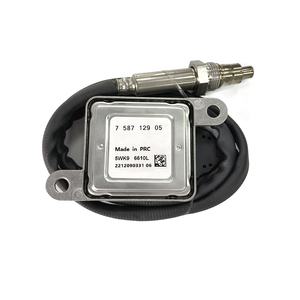
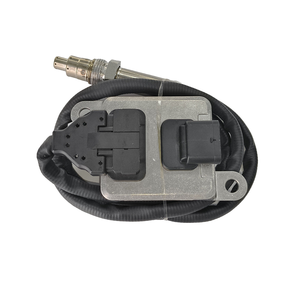
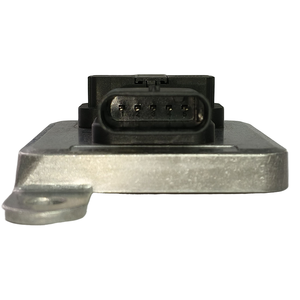
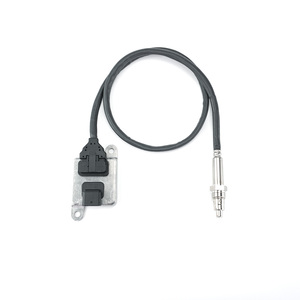
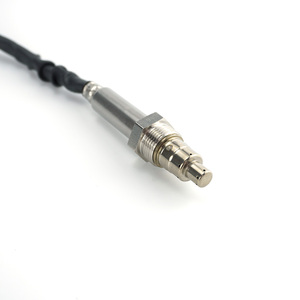

























The Electronic Fuel Injection (EFI) system in internal combustion engines uses several sensors to monitor engine operation and control fuel delivery. The sensors provide data to the engine control unit (ECU) so it can adjust fuel injection based on parameters such as air temperature, engine speed, and throttle position. EFI sensors improve fuel efficiency and reduce emissions while enhancing engine performance. There are different types of EFI sensors.
Mass Airflow Sensor (MAF)
The mass airflow sensor measures the amount of air entering the engine for accurate fuel metering. It uses a heated wire element that senses changes in current caused by air passing over it. The ECU adjusts fuel delivery based on MAF readings to optimize combustion under different operating conditions. MAF sensors improve throttle response, power output, and fuel efficiency while meeting emission standards.
Manifold Absolute Pressure Sensor (MAP)
The MAP sensor measures manifold pressure, which indicates the amount of air in the intake manifold. Like a barometer, it measures atmospheric pressure and converts it into an electrical signal for the ECU. MAP data helps determine engine load, altitude, and acceleration. The ECU uses MAP readings to adjust fuel delivery and ignition timing. MAP sensors enable precise control of fuel injection, improving performance and emissions control.
Throttle Position Sensor (TPS)
The throttle position sensor detects the position of the throttle valve in the intake air stream. It is a potentiometer that sends a variable voltage signal to the ECU, indicating whether the driver is accelerating, decelerating, or idling. TPS information helps the ECU manage fuel injection, ignition timing, and actuator control. By monitoring throttle position, the engine can respond appropriately to driver inputs, ensuring smooth operation and optimal performance.
Engine Coolant Temperature Sensor (ECT)
The engine coolant temperature sensor measures the temperature of the engine coolant. It is a thermistor that changes resistance with temperature, sending a signal to the ECU. The ECT sensor informs the engine about the coolant temperature, indicating cold start, operating, or overheating conditions. Based on ECT data, the ECU can enrich the fuel mixture during cold starts, activate the idle air control valve when needed, and control cooling fan operation. The ECT sensor protects the engine from damage, optimizes fuel efficiency, and reduces emissions.
Oxygen Sensors (O2)
O2 sensors measure the amount of oxygen in the exhaust gas. They provide feedback to the ECU about the air-fuel ratio. The information helps the engine maintain a stoichiometric mixture for complete combustion, ensuring optimal fuel efficiency and emissions control. O2 sensors play a crucial role in closed-loop fuel control, adjusting fuel trim values based on sensor signals. They enable precise air-fuel ratio management, contributing to engine performance and emission reduction.
Fuel Pressure Regulator (FPR)
The fuel pressure regulator maintains a constant pressure differential between the fuel rails and the intake manifold. It ensures consistent fuel delivery to the injectors, regardless of engine load or speed. The FPR modulates fuel flow based on vacuum signals from the intake manifold. By maintaining stable fuel pressure, the regulator allows precise metering of fuel by the injectors, ensuring optimal combustion across all engine operating conditions.
The specifications of EFI sensors differ depending on the type and application. However, here are some general specifications to help understand EFI sensors better.
Temperature Tolerance
EFI sensors have different temperature tolerances depending on the type. For instance, oxygen sensors have a temperature tolerance of 300–1,000 degrees Fahrenheit. In contrast, intake air temperature sensors can only tolerate 50–200 degrees Fahrenheit.
Voltage Output
Different EFI sensors have varying voltage outputs. As mentioned earlier, fuel pressure sensors have a voltage output that corresponds to the pressure level. For instance, a fuel pressure sensor may have a voltage output ranging from 0 to 5 volts. MAP sensors have a voltage output that corresponds to the pressure level.
Resistance
Temperature-based sensors such as the coolant temperature sensor and the intake air temperature sensor use resistance to measure temperature changes. Generally, these sensors have a resistance value ranging from 2000 to 10,000 ohms at room temperature.
Response Time
EFI sensors have different response times depending on their function. For example, oxygen sensors can detect changes in oxygen levels in about 100 milliseconds. In contrast, knock sensors take milliseconds to detect a knock event.
Maintaining EFI sensors is crucial in ensuring they last longer and function correctly. Here are some general maintenance tips:
Compatibility
When selecting an EFI sensor, it is important to ensure that it is compatible with the engine and fuel system. This guarantees that the sensor will connect and interact correctly with other components. For example, a fuel pressure regulator sensor should match the specifications of the fuel pump and fuel injectors to accurately monitor pressure. Checking compatibility avoids issues like incorrect readings or damage to the sensor.
Quality and Reliability
Quality and reliability are important when choosing an EFI sensor. The sensor must be dependable so that it provides accurate readings consistently over time. Sensors from reputable brands with quality manufacturing are less likely to have problems. Reliability is critical because if the sensor fails or gives bad readings, it can cause engine performance issues. The driver may notice symptoms like rough idling, poor acceleration, or decreased fuel efficiency. However, the sensor's problem would be detected through diagnostic testing. Then, the mechanic can use a scan tool to check the sensor values and compare them to expected ranges.
Price
When purchasing EFI sensors, there is a wide range of prices depending on the type and brand. For example, mass air flow sensors and oxygen sensors tend to be on the higher end of the price spectrum because they are critical components required for the engine to run properly and efficiently. Other sensors like the coolant temperature sensor or oil pressure switch are less expensive. However, it is important not to compromise quality for a lower price. Sensors from reputable brands with quality components should be selected, even if they are slightly more expensive. This ensures reliability, accuracy, and durability, which saves money in the long run.
Durability
Durability is an important factor when selecting EFI sensors. The sensor must be able to withstand the environmental conditions it will be exposed to. For example, sensors located under the hood must handle extreme heat and temperature fluctuations. Similarly, sensors used in fuel systems should resist corrosion from exposure to gasoline and other chemicals. Sensors made with high-quality materials designed for the specific application are durable. This prevents the hassle and expense of having to replace faulty sensors frequently.
Ease of Installation
When selecting EFI sensors, the ease of installation is an important factor to consider. Sensors that are simple to install without major modifications or specialized tools required are preferred. This saves time and money compared to complicated installations. Sensors that are installed through a simple screw-on or plug-in connection are easier. Additionally, detailed instructions or video tutorials for installation should be checked. Reliable car sensor suppliers provide installation guides to help with correct installation.
Warranty and Support
Warranty and support are important factors when selecting EFI sensors. It is advisable to choose sensors from suppliers who offer a guarantee. The warranty protects the consumer by covering repairs or replacements if the sensor has defects. Additionally, reliable sensor suppliers provide support in case of problems. This can be technical help or assistance with sensor selection. The supplier's support is valuable for troubleshooting issues or answering questions.
Before replacing the EFI sensor, it is important to know how it works. The Electronic Fuel Injection system relies on several sensors to provide the proper air-fuel mixture to the engine.
With a proper EFI sensor kit and repair manual, one can attempt to replace the sensor. Follow these steps:
Q1: How do I know my car's EFI system has a problem?
A1: There are several signs that indicate a faulty EFI system. They include: Poor engine performance, difficulty starting the engine, changes in exhaust emissions, changes in fuel consumption, sound changes and warning lights.
Q2: What is the difference between carburetors and EFI?
A2: Carburetors are older fuel management systems that mix air and fuel mechanically, while EFI does the same electronically. EFI is more efficient and provides better fuel atomization, leading to higher engine performance.
Q3: Can I upgrade from carburetors to EFI?
A3: Yes, it is possible to upgrade from carburetors to EFI. This can be done through a retrofitting process, which improves engine performance and fuel efficiency.
Q4: What is the lifespan of EFI?
A4: While EFI sensors have varying lifespans depending on several factors, such as maintenance and usage, generally, they can last for hundreds of thousands of kilometers.
Q5: Does the EFI system require special maintenance?
A5: The EFI system does not require special maintenance, but users should carry out regular maintenance to all components, such as fuel cleaning, to ensure they function properly.